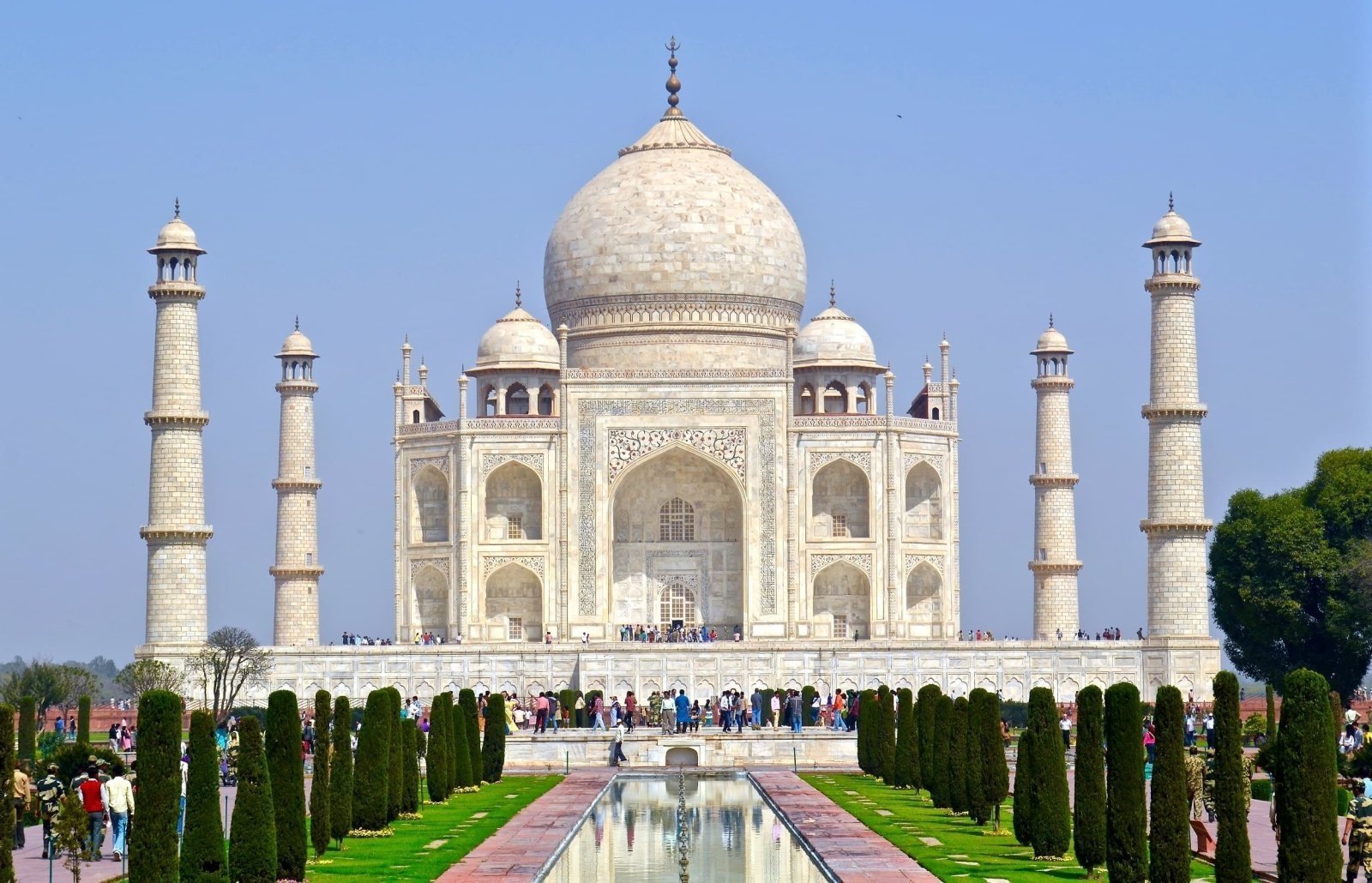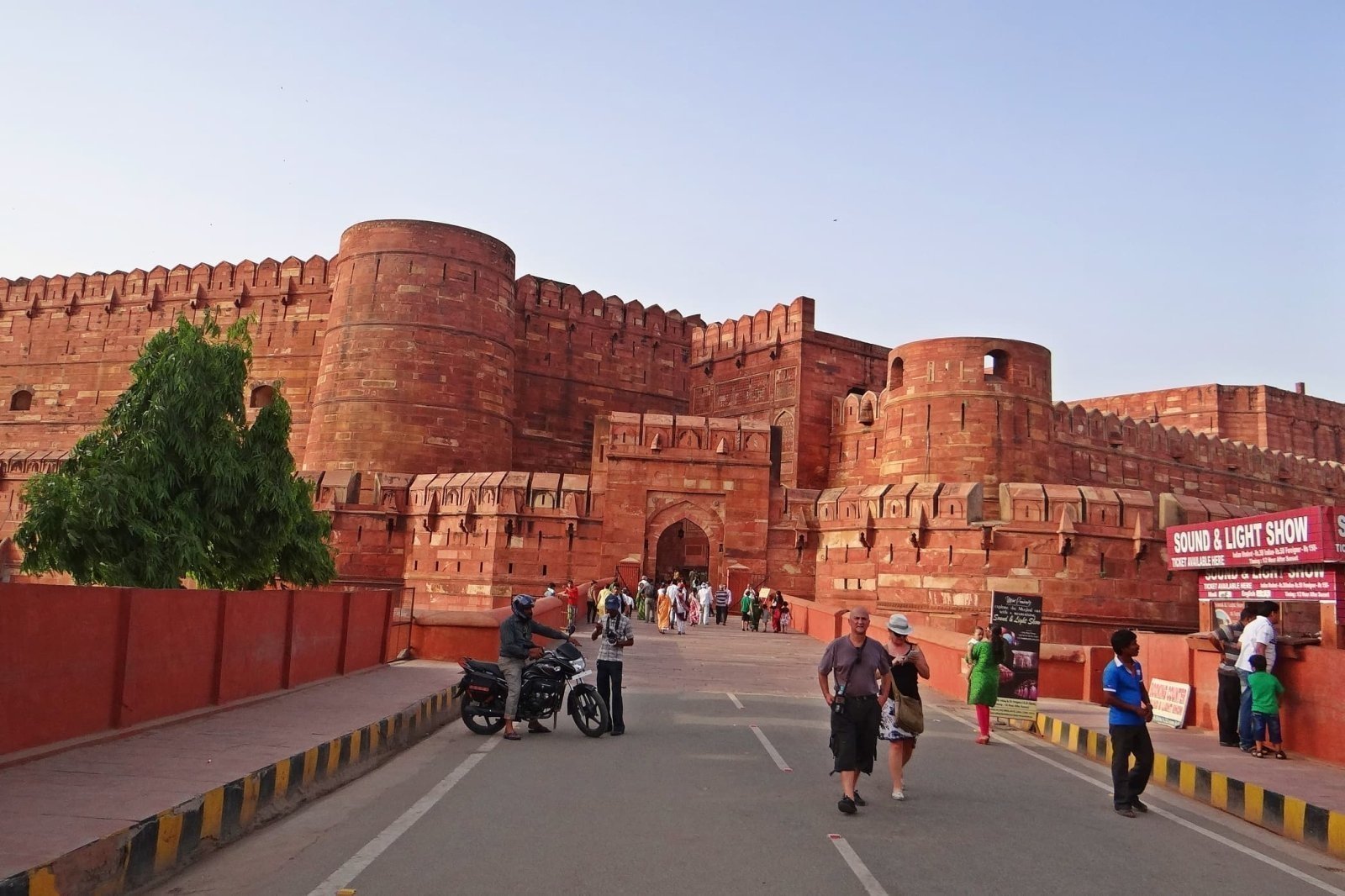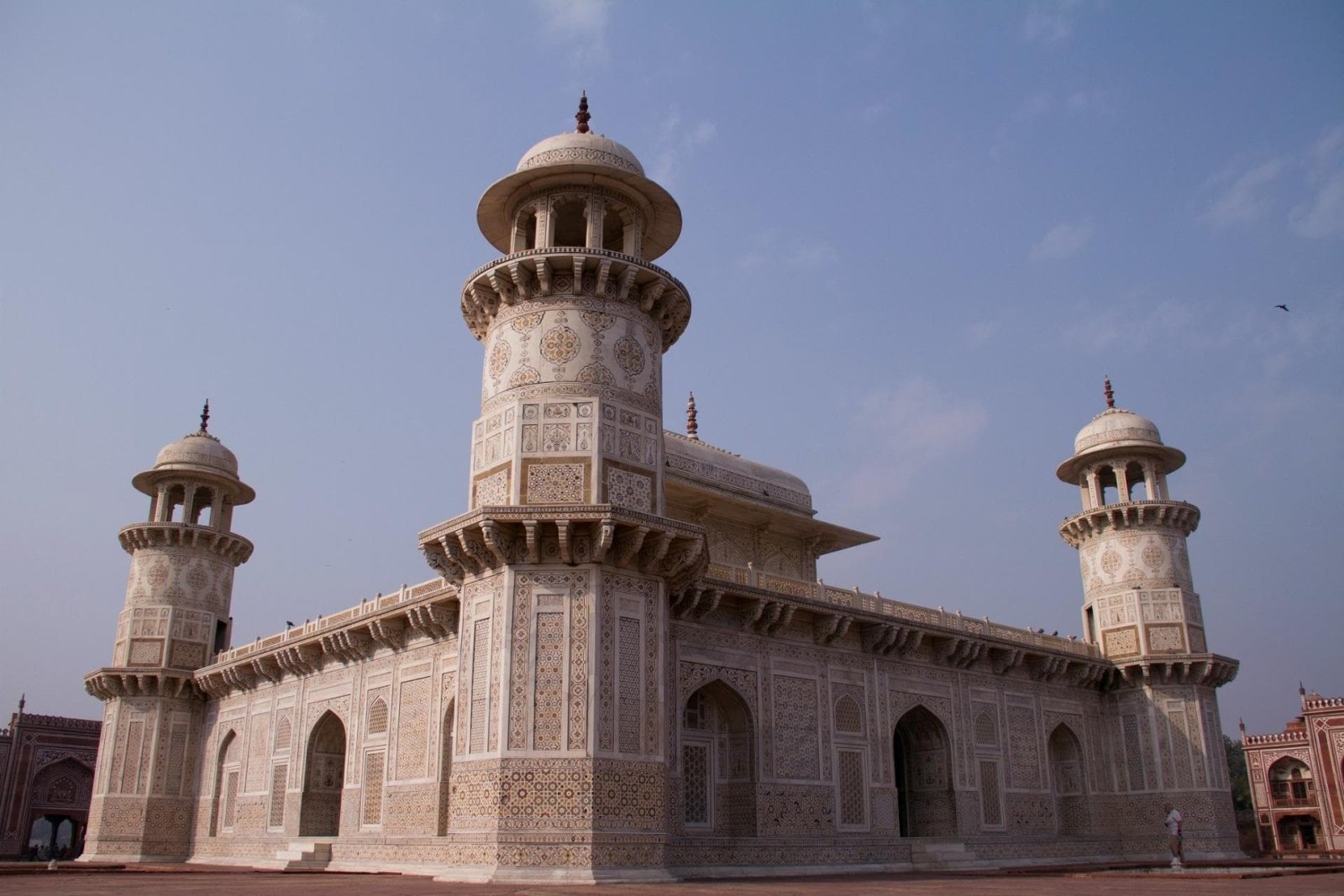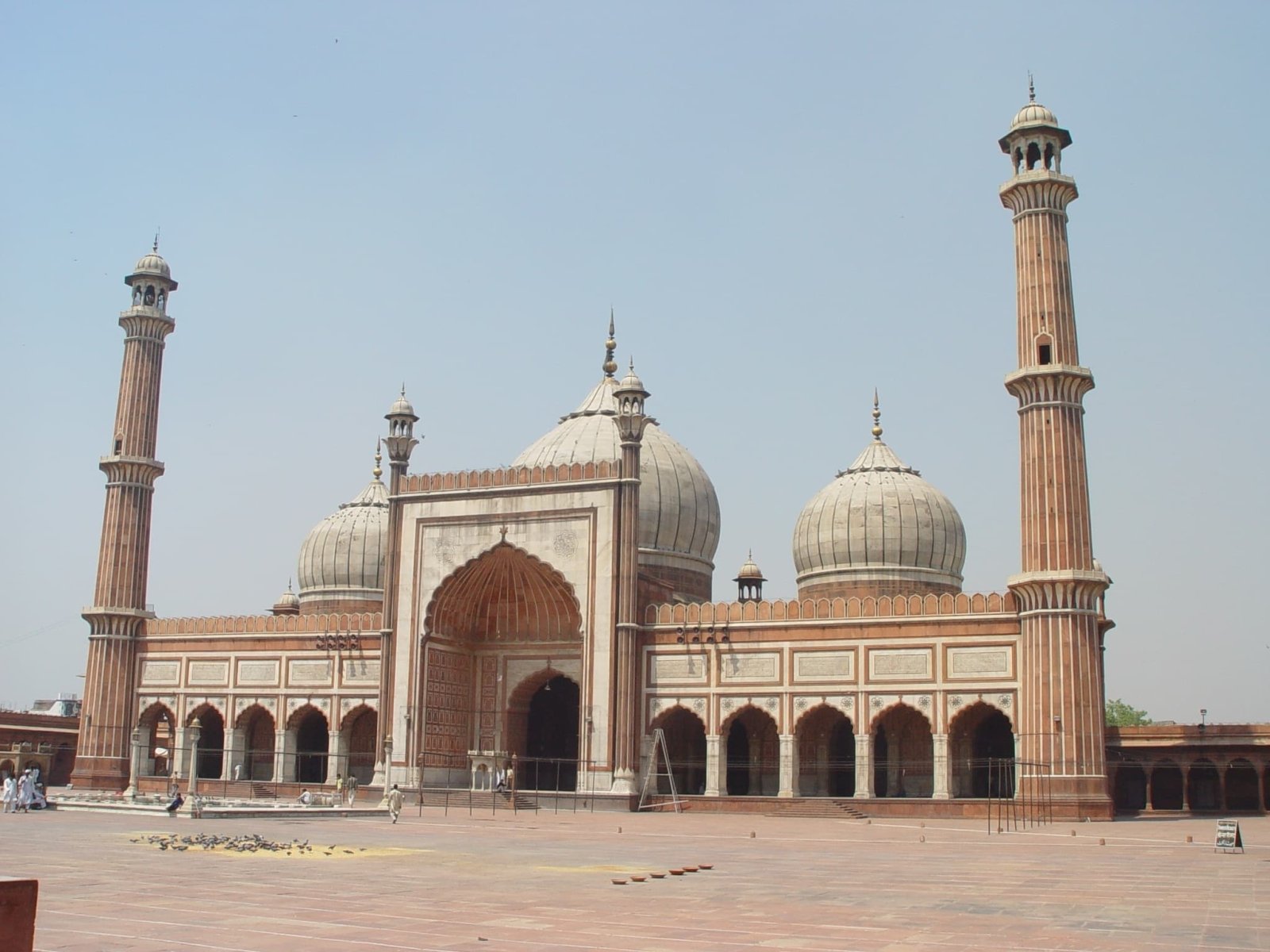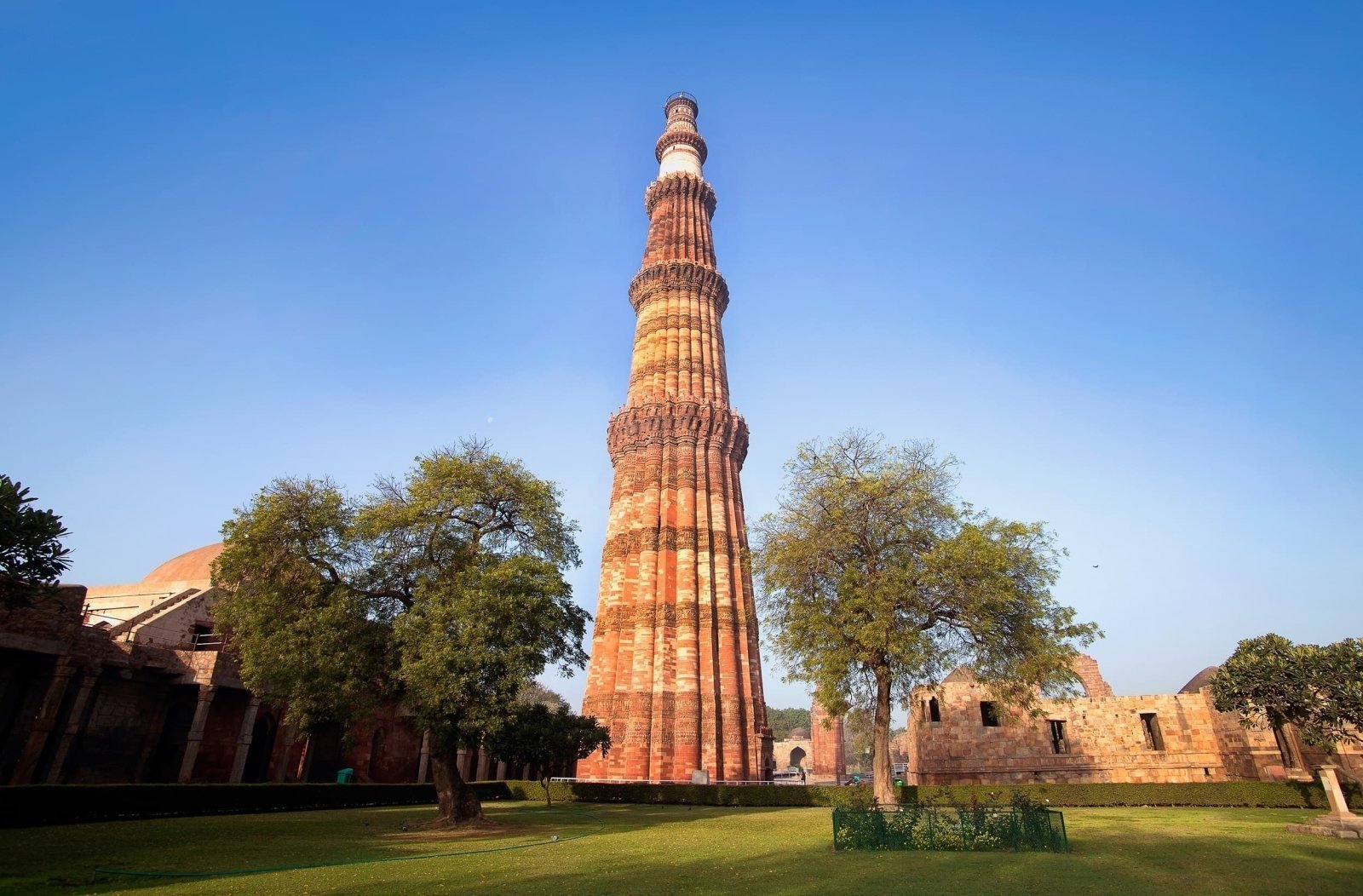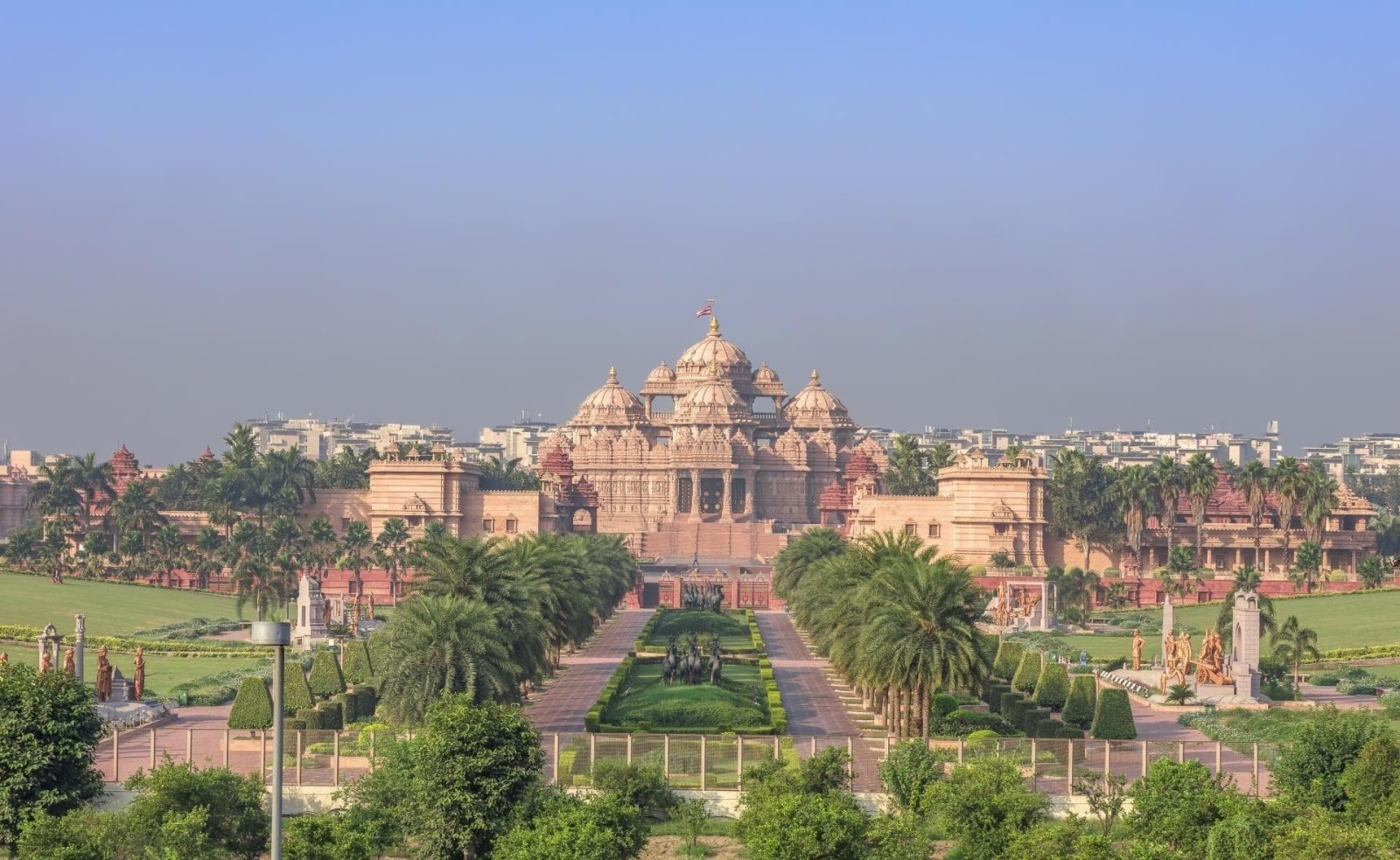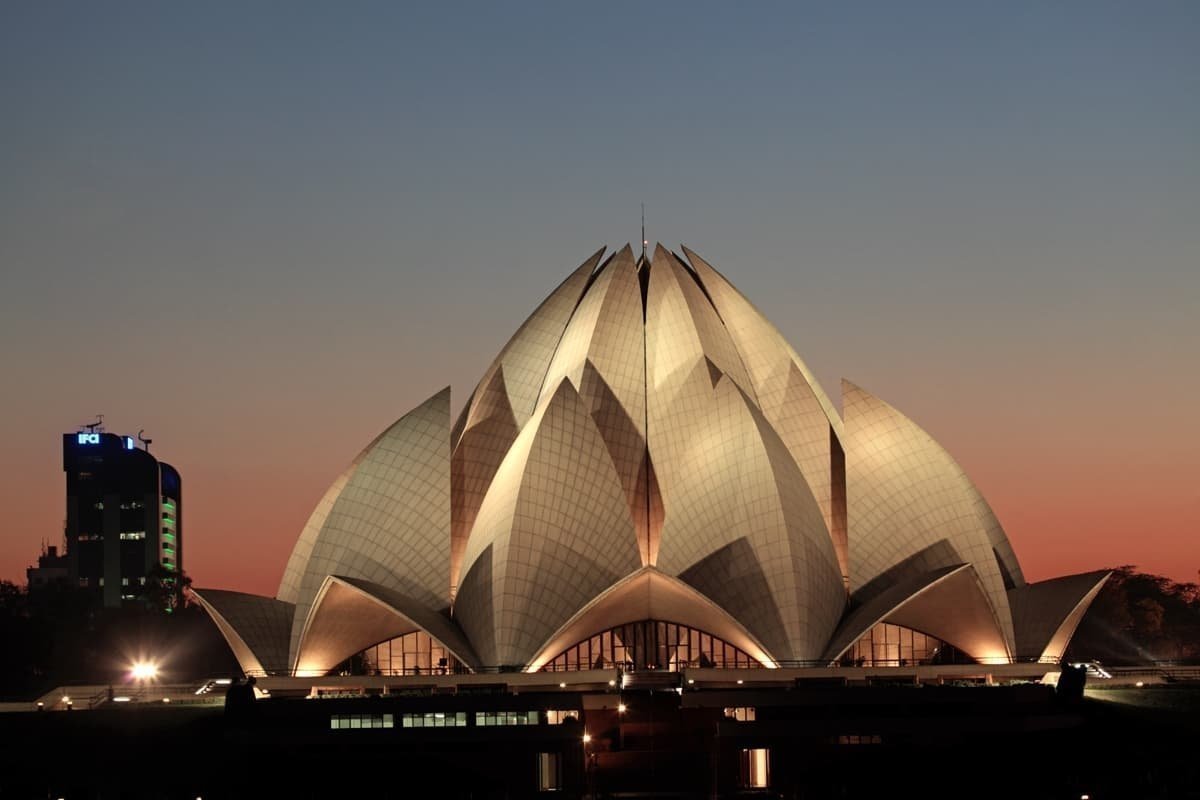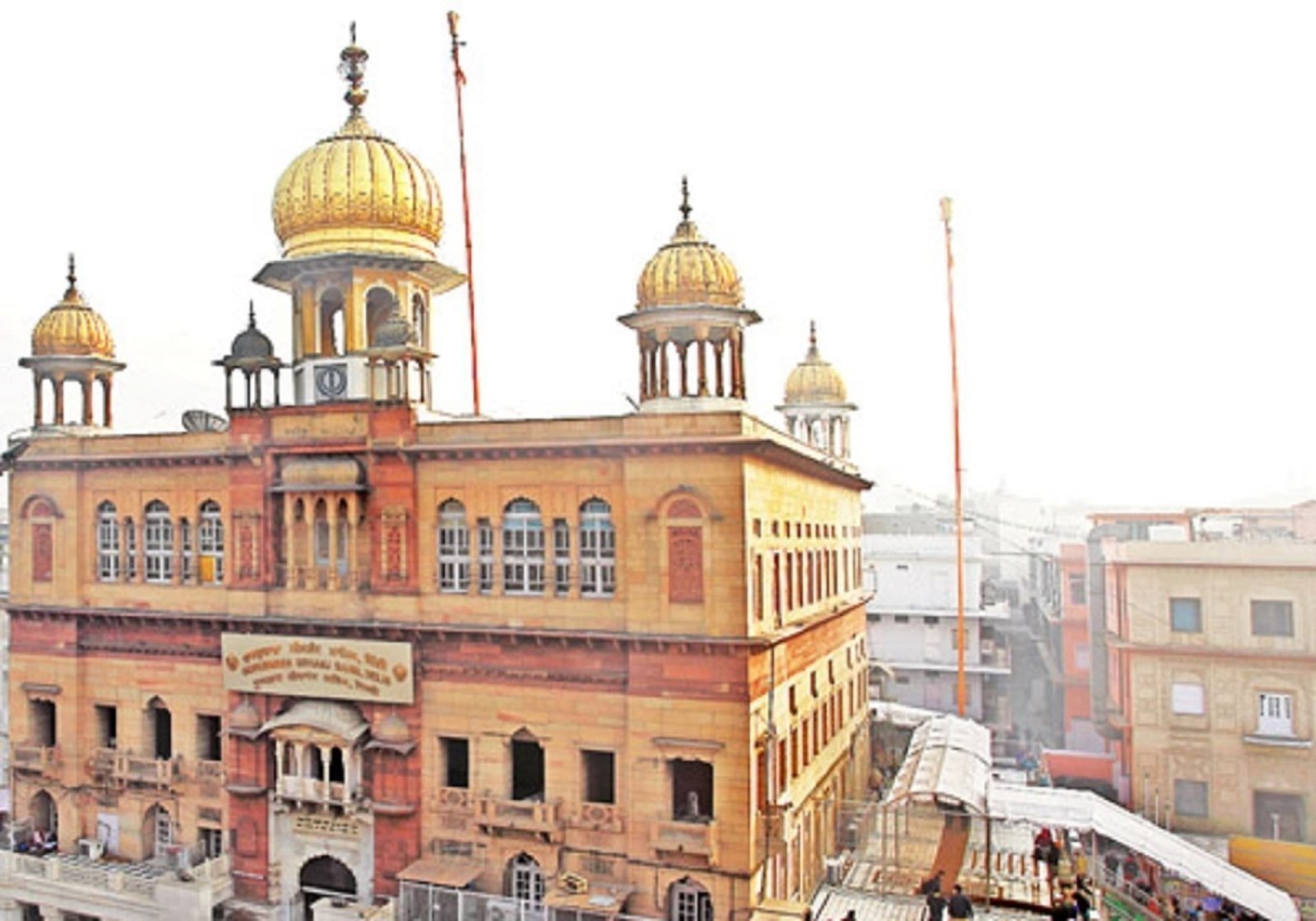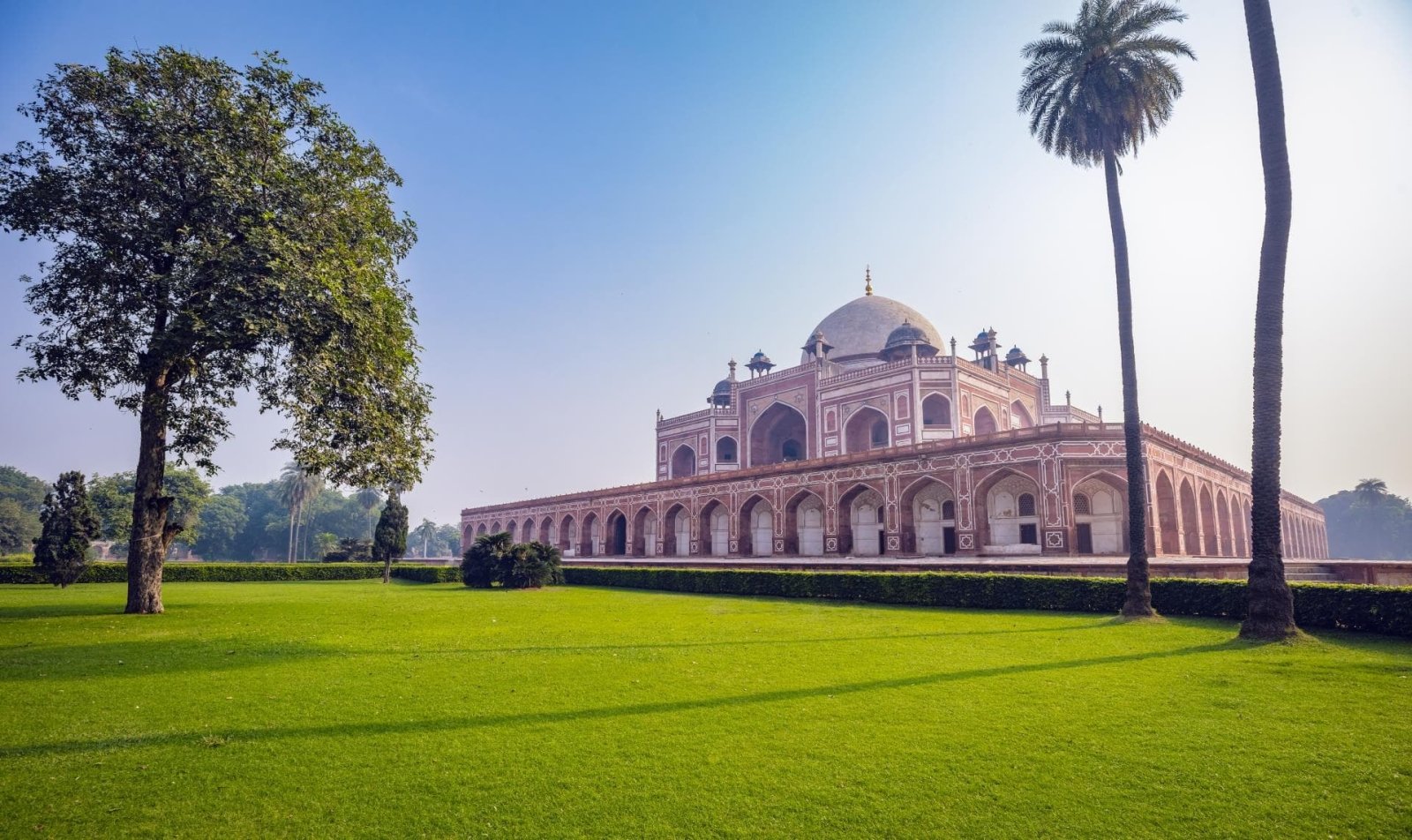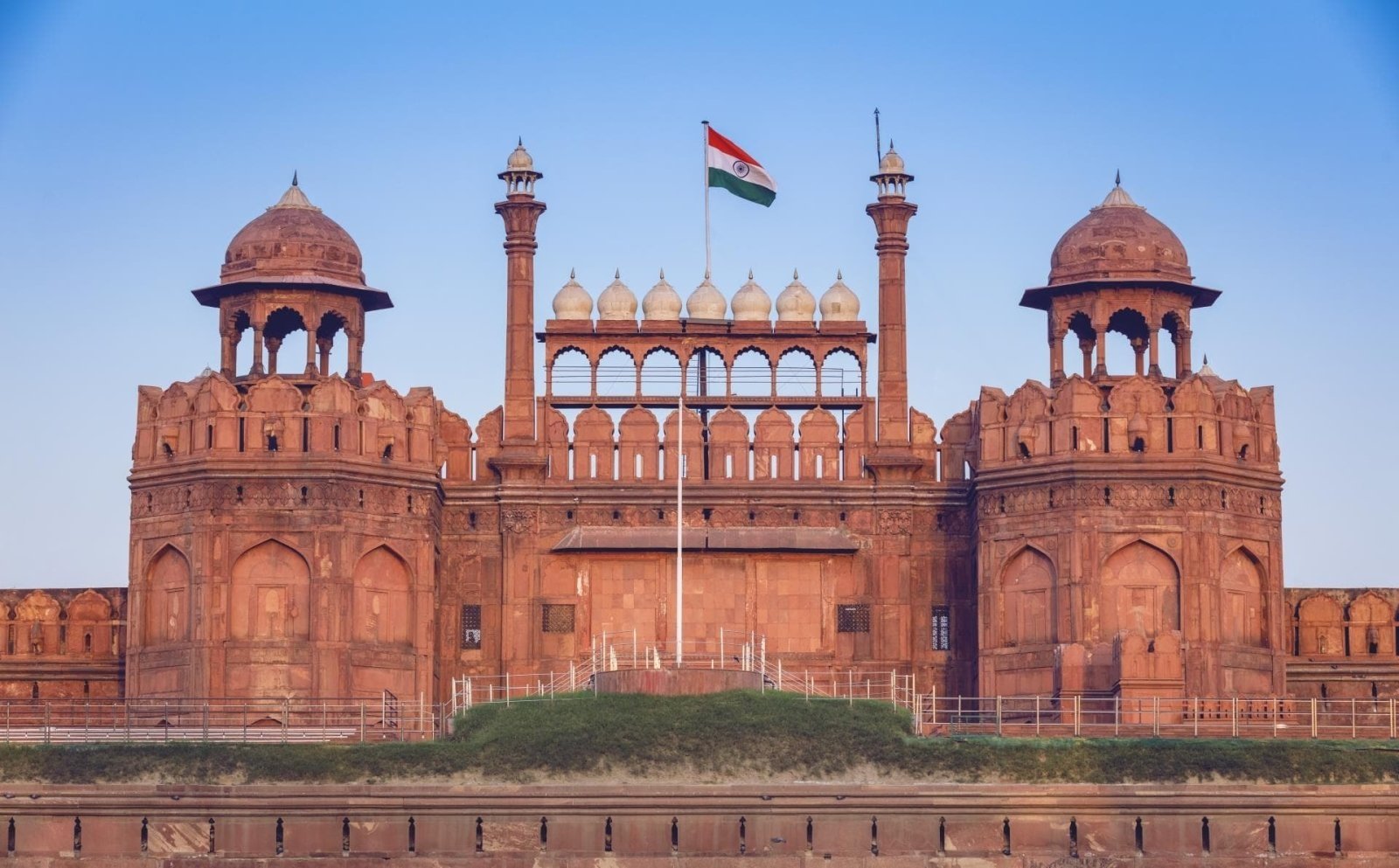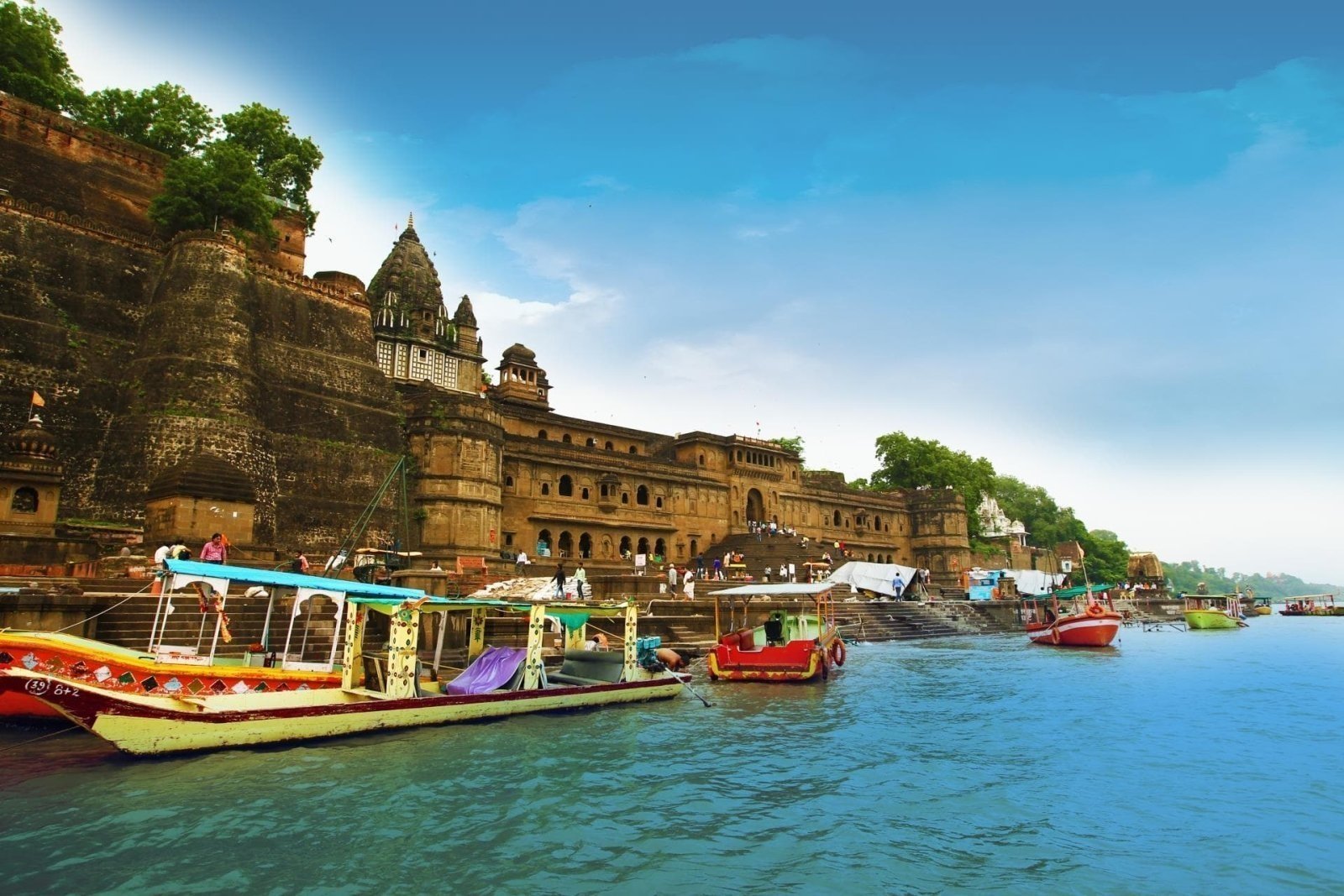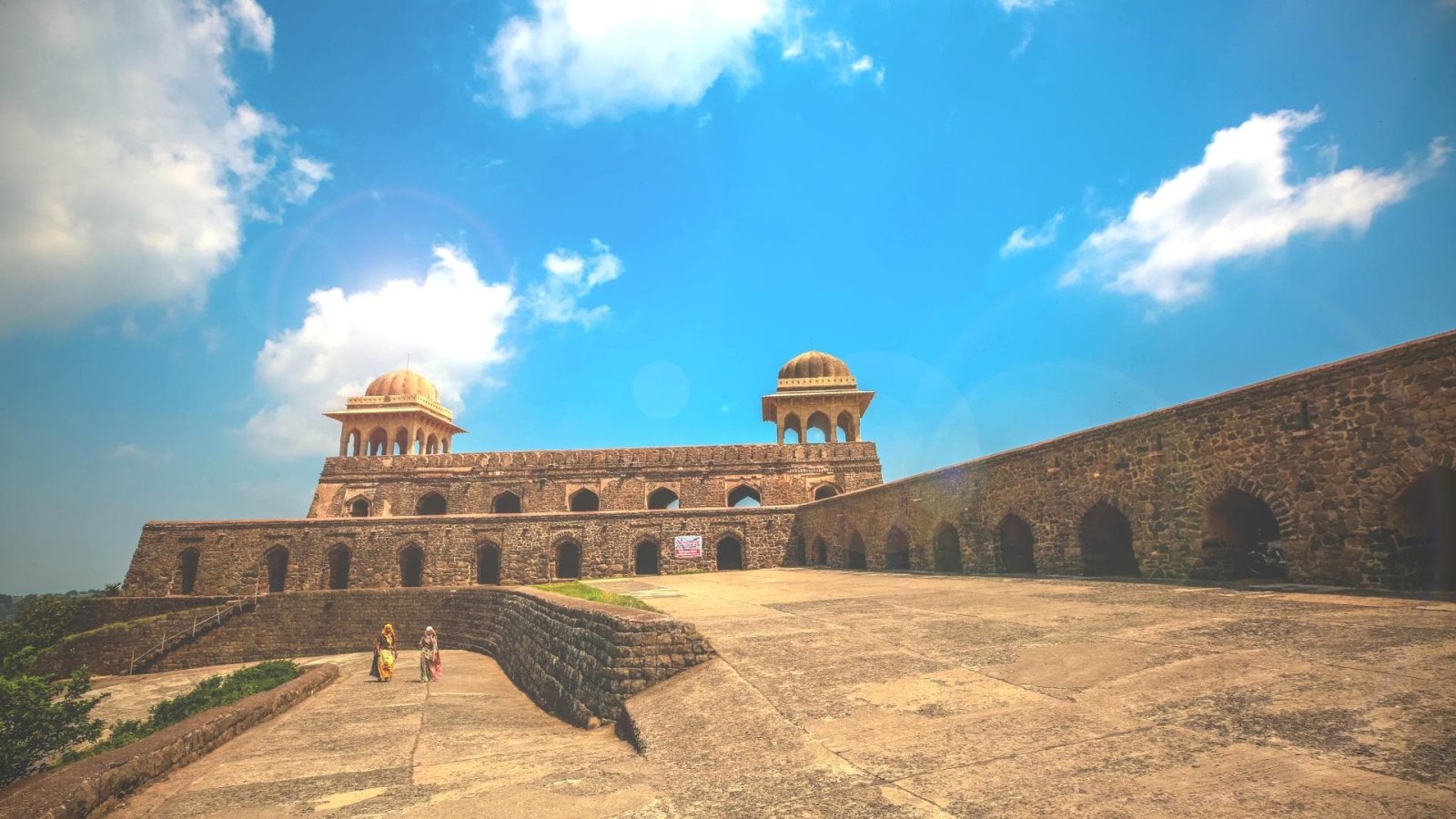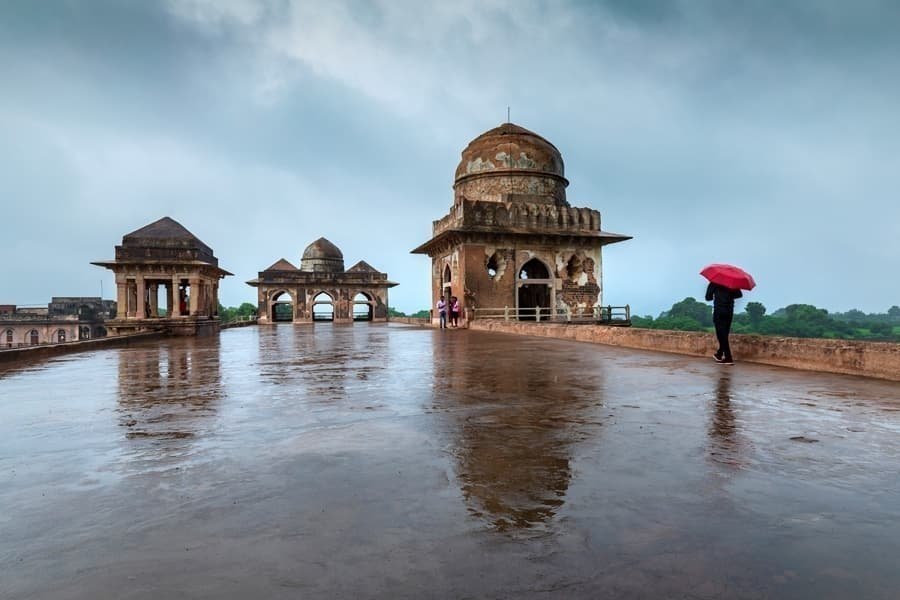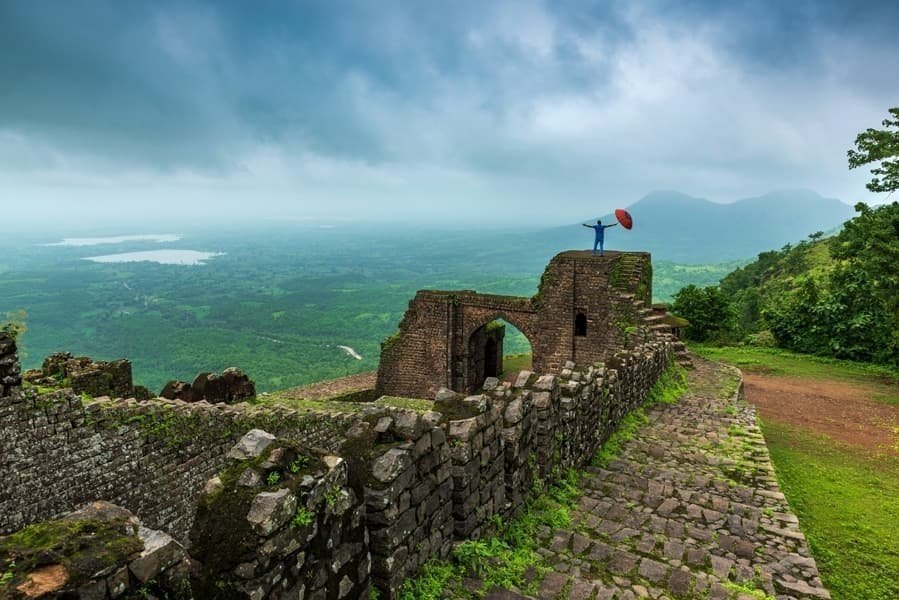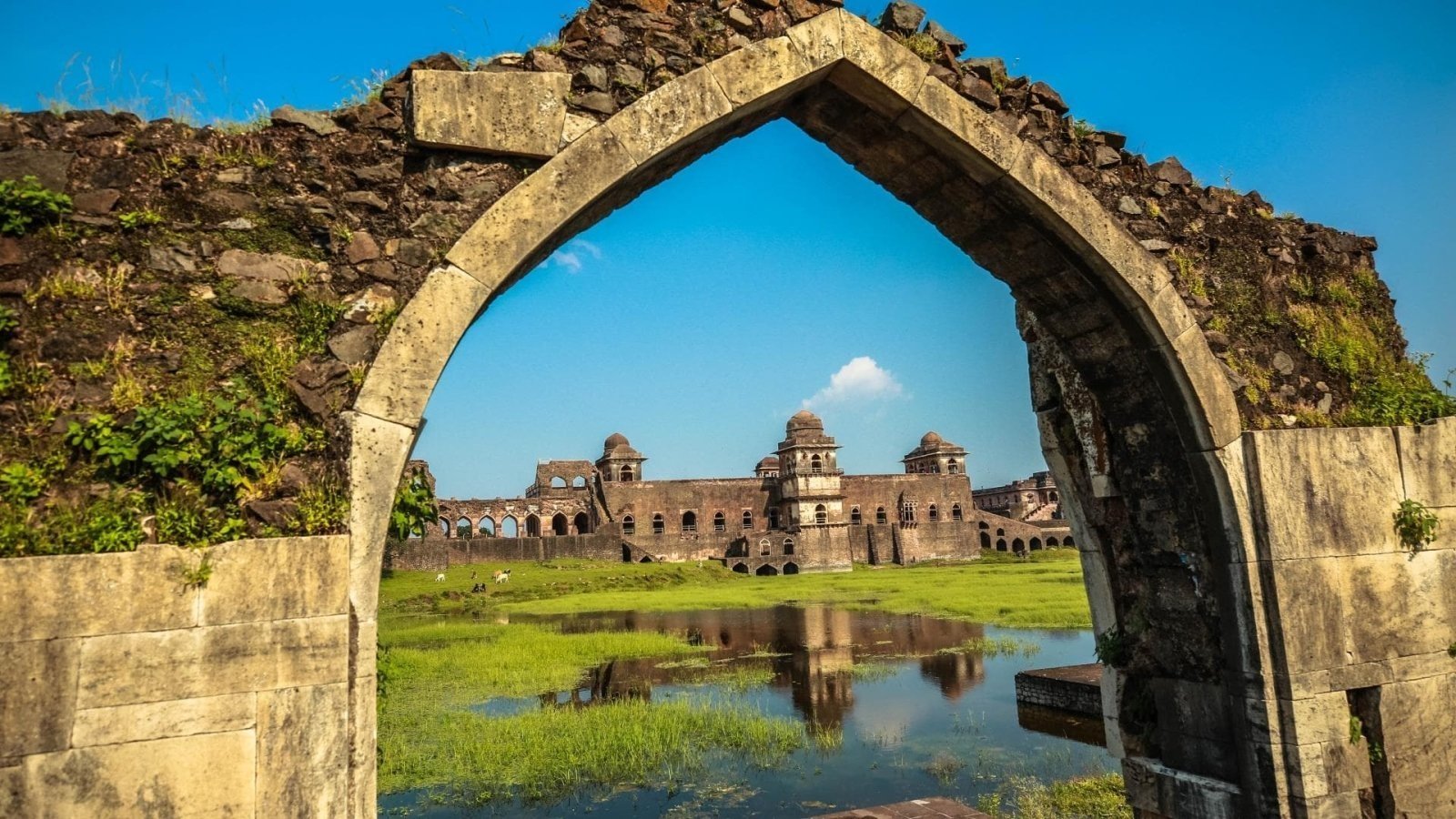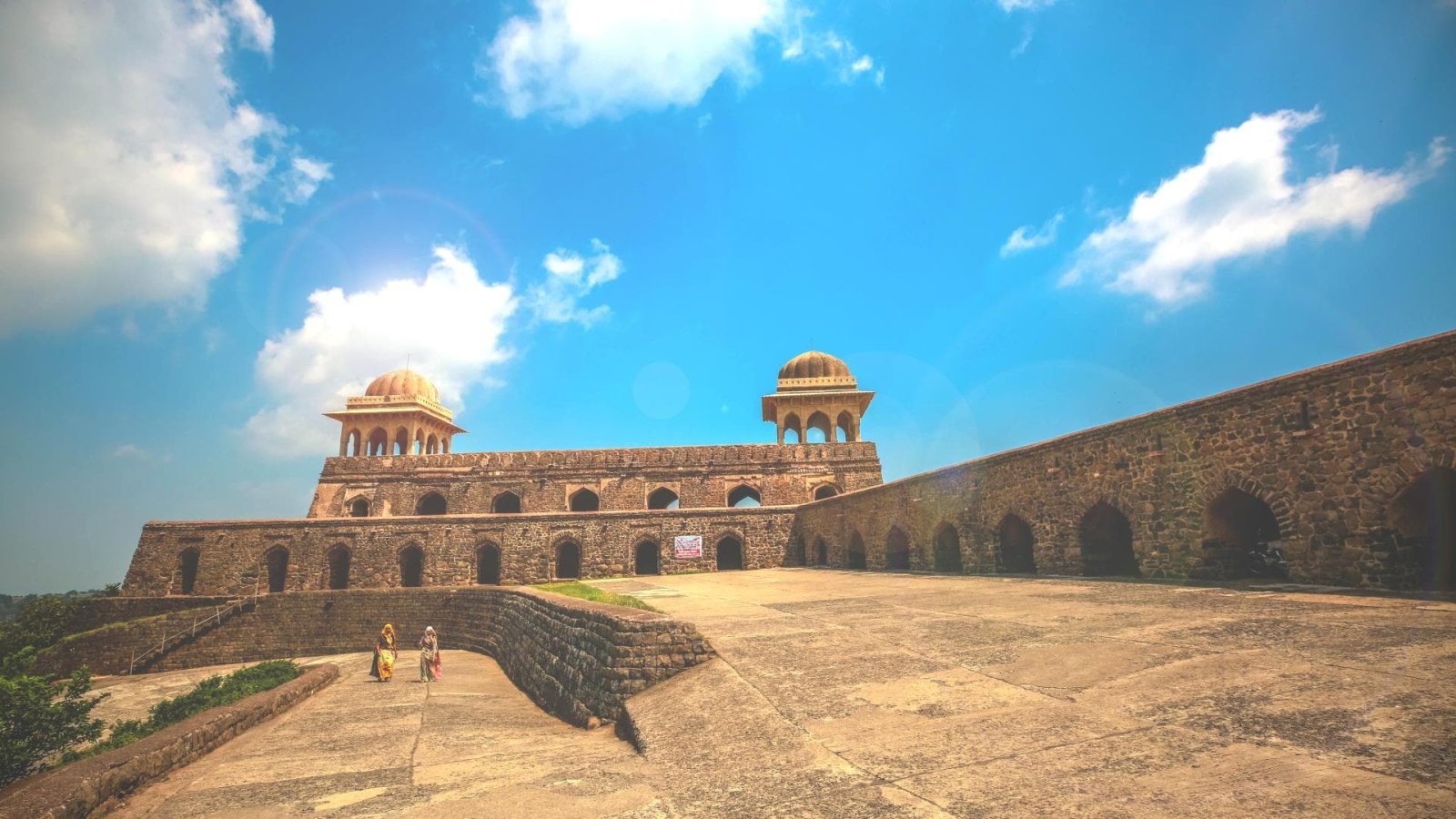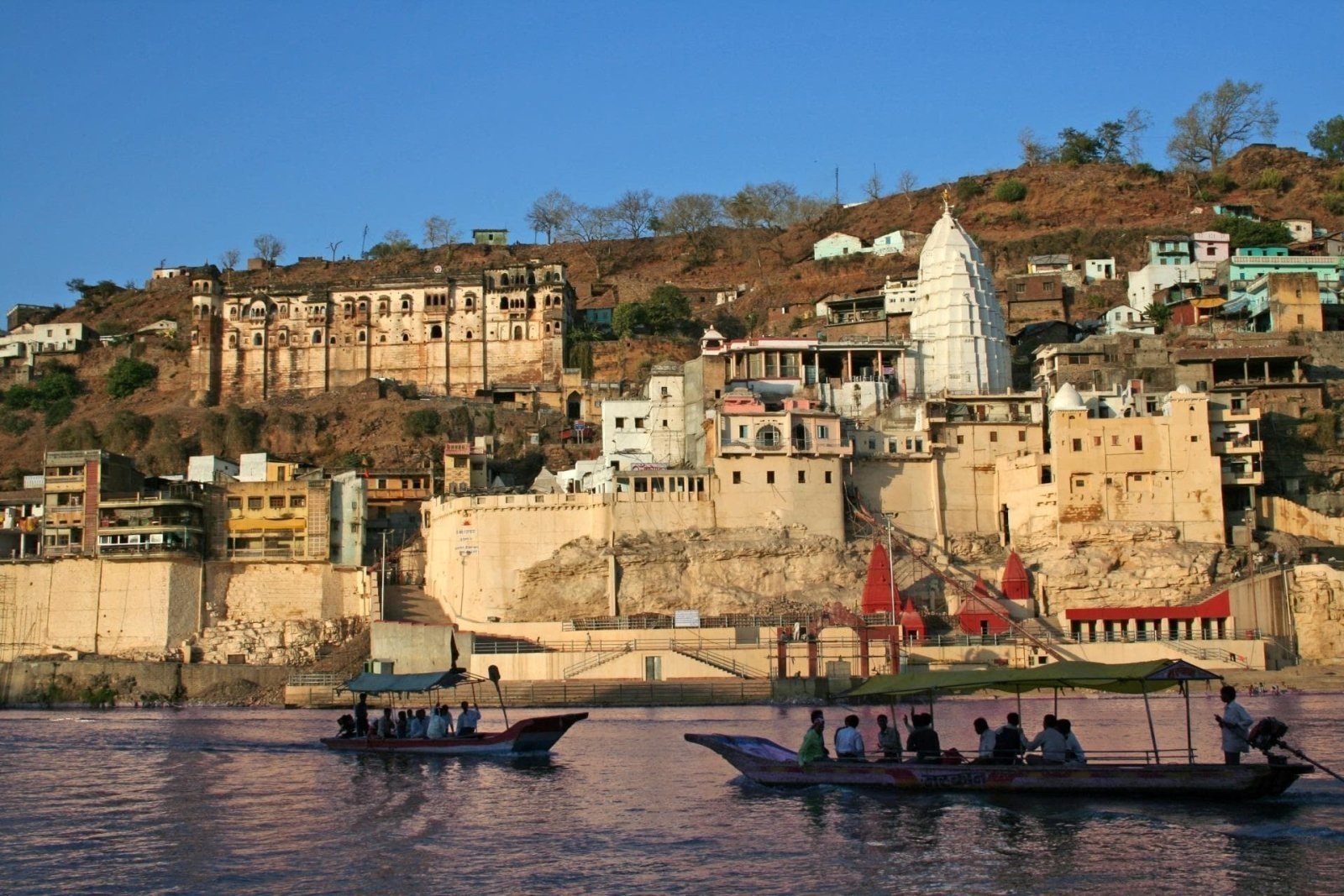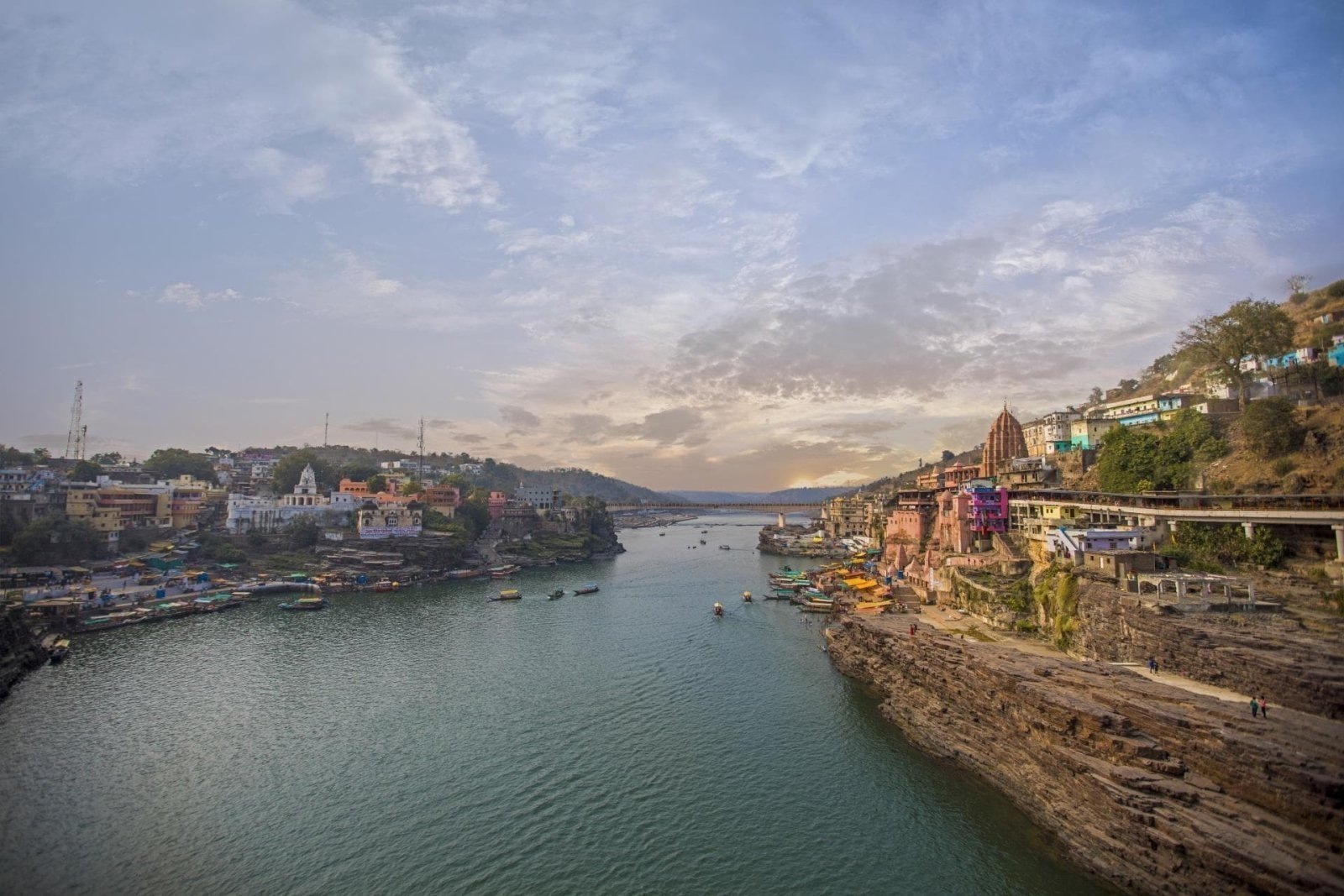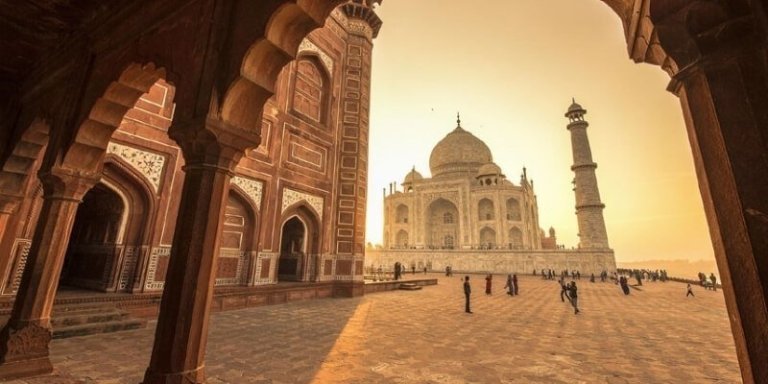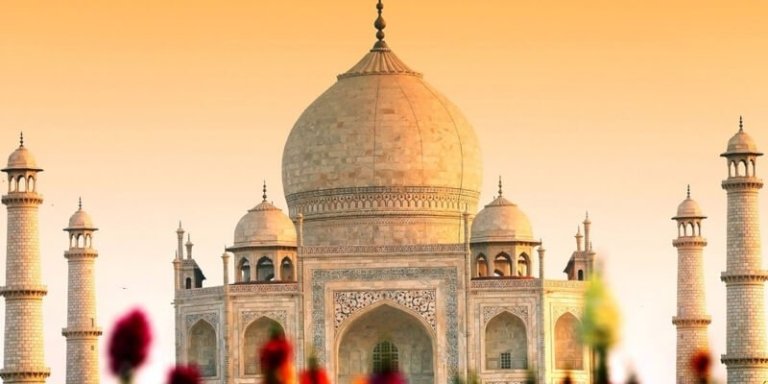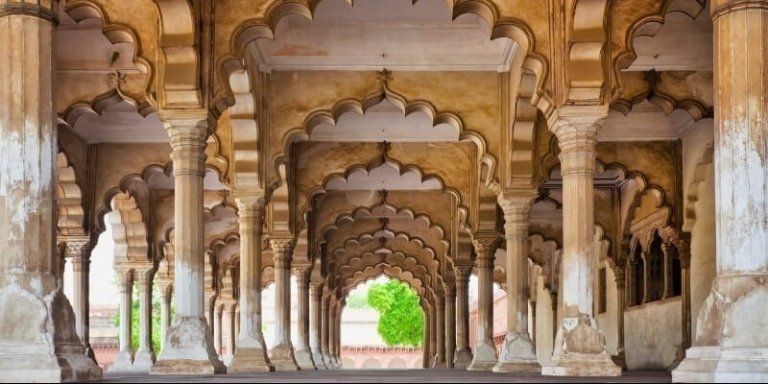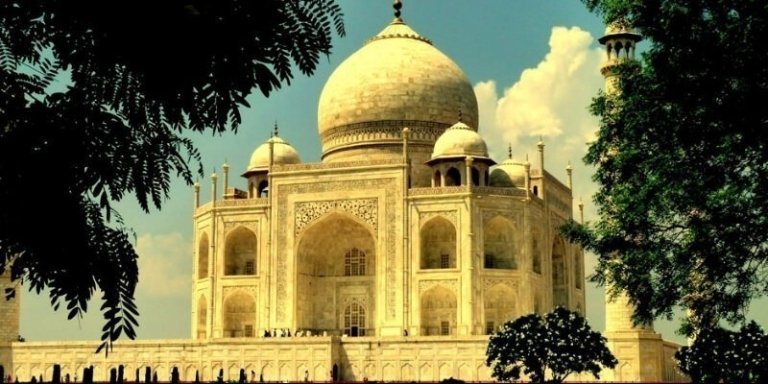Private Taj Mahal Tour from Delhi takes you to Taj Mahal - truly one of the world's greatest sights. In all its stately glory as you enjoy an exclusive private tour with local guide and visiting Read more ➤
Mumbai to Delhi Overland Tour
-
Duration - 15 days
-
Guide optionsEnglish
-
Cancellation PolicyStandard
Overview
Mumbai to Delhi Ancient Caves, Temples and Mughal Monuments tour will begin with pick up from Mumbai airport. The itinerary include visit to ancient caves at Elephanta, Nashik, Ellora, Ajanta & Bhimbetica. Ancient Temples at Nashik, Ellora, Asirgarh, Omkareshwar, Maheshwar, Ujjain, Bhojpu
Highlights
- This is a private tour/activity only for your group.
- Enhanced cleaning/ traveler safety
- In-depth cultural experience
- Visit many UNESCO World heritage sites Caves and Temples
- Personalized attention & services of a private guide
- Flexible sightseeing & stopover

Description
Mumbai to Delhi Overland Tour
Mumbai to Delhi Ancient Caves, Temples and Mughal Monuments tour will begin with pick up from Mumbai airport. The itinerary include visit to ancient caves at Elephanta, Nashik, Ellora, Ajanta & Bhimbetica. Ancient Temples at Nashik, Ellora, Asirgarh, Omkareshwar, Maheshwar, Ujjain, Bhojpur, Sanchi & Udayagiri. Also explore the Mughal monuments at Aurangabad, Burhanpur, Mandu Bhopal, Agra & Delhi. Most of the monuments you will visit on this tours are UNESCO World Heritage Sites. Transport service will remain on disposal with you from arrival till departure.
What's included
- Inclusions:
- Assistance on arrival at airport.
- 14 Nights accommodation in 4* hotels.
- Daily breakfast & meal as per day plan (B- Breakfast, L- Lunch, D- Dinner)
- Private air conditioned deluxe car for airport transfer, sightseeing and excursion as per program.
- English speaking tour guide on sightseeing days (local guide in each city), as per program.
- Monuments entrances and activities charges mentioned in the itinerary.
- Bottled drinking water in car.
- Government taxes.Train Ticket from Bhopal to Agra in AC Chair Car
- Exclusions:
- Any flight tickets.
- Camera charges at monuments.
- Meals other than mentioned in day plan.
- Expenses of personal nature like liquor, laundry, tips, telephone, fax, internet etc.
- Gratuities & optional activities.
- Anything not mentioned in inclusions.
Itinerary
- Visited Places:
- Delhi
- Agra
- Bhopal
- Sanchi Stupa
- Bhimbetka rock shelters
- Mahakaleshwar Jyotirlinga
- Indore
- Mandav
- Maheshwar
- Mumbai
- Nashik
- Shirdi
- Aurangabad
- Ellora caves
- Ajanta Caves
- Burhanpur
- Omkareshwar
- Asirgarh
Day 1: Arrive Mumbai
On arrival at Mumbai airport meet with our office executive assistance and transfer to hotel (hotels check in time 1200hr afternoon, early check in subject to room’s availability).
Rest time free for personal activities relax, you can take a walk to have a glance of the city, visiting local markets and restaurants. Overnight at hotel.
Day 2: Mumbai
Breakfast at hotel, city tour of Mumbai. Drive to Marine Drive: one of the most beautifuly laid boulevards in the city. Afterwards visit to Elephanta caves (Monday closed), from Gateway of India cruise by motorboats to Elephanta Caves. A flight of 100 steps takes you to the top of the hill where it is set. Afterwards in the afternoon cruise back to Gateway of India and then city tour. Visit Parliament House (view from outside), Chhatrapati Shivaji Terminus (CST), formerly Victoria Terminus a UNESCO World Heritage Site (view from outside), Dhobhi Ghat see the city's famous open-air laundry in action, Prince of Wales Museum (Monday closed) a heritage museum comprises of a number of ancient artifacts & Mani Bhawan here Gandhi laid the foundation for many independence movements. Overnight at hotel.
Day 3: Mumbai – Nashik (170kms/ 4hrs)
Breakfast at hotel, drive to Nashik check in at hotel.
Later visit Trimbakeshwar Temple located on the outskirts of Nashik, the ancient Trimbakeshwar Temple was constructed by the third Peshwa Balaji Bajirao (1740-1760) at the site of an even older temple. It sits at the foot of the Brahmagiri Hill and is flanked by the hills of Nilagiri and Kalagiri. Made entirely of black stone, it is a beautiful pilgrimage center for Hindus, dedicated to Lord Shiva. It is located near the town of Trimbak, from where River Godavari originates. Kusavarta, a pond within the temple premises, represents the origin point of the holy river. The temple is among the most important in the region as it houses one of the 12 jyotirlingas. The focal point of the shivling here is the fact that it is a three-faced linga embodying Lord Brahma, Lord Vishnu and Lord Shiva. The linga is adorned by a crown made of diamonds, emeralds and other precious stones. The crown is displayed every Monday for an hour in the evening. Within the temple, you will also come across images of other gods and goddesses such as Goddess Gangadevi, Lord Jaleswara, Lord Rameswara, Lord Gautameswara, Lord Kedarnath, Lord Rama, Lord Krishna, Lord Parasurama and Lord Lakshmi Narayana.
While you’re here, you can also explore the impressive Brahmagiri Fort, and Gangadwar, located in close vicinity to the temple. Return to your hotel for overnight stay.
Day 4: Nashik – Shirdi - Aurangabad (170kms/ 4hrs)
Breakfast at hotel, visit the ancient holy city, known for its links to the “Ramayana” epic poem. On the Godavari River is Panchavati, a temple complex. Nearby, Lord Rama was thought to have bathed at Ram Kund water tank. Shri Kalaram Sansthan Mandir is an ancient shrine to Rama, while Rama and Sita are said to have worshipped at Sita Gufaa caves.
Sundarnarayan Temple marks the site of a legend of Lord Vishnu. Tapovan is a pilgrimage site next to the Nasardi River, close to where Lord Rama purportedly lived. Colorful statues of Hindu gods fill ISKCON, a modern temple for the worship of Lord Krishna. The temple complex Muktidham, in white sculpted marble, has painted scenes depicting the lives of Krishna and several chapters of the "Bhagavad Gita," an ancient Hindu scripture. On a small hill to the southwest are the 24 Pandavleni Caves, dating back millennia. They are marked by Buddha carvings, rare inscriptions and cisterns. Vineyards dot the land west of the city.
Later drive to Aurangabad via visiting Shirdi. Shirdi is known as home of revered spiritual leader Sai Baba, and as a major pilgrimage site. Devotees gather daily at the Sai Baba Temple complex to honor his legacy. Here, the Samadhi Mandir shrine has an ornate marble statue of Sai Baba, alongside his tomb. Close by are Dwarkamai, a mosque where Sai Baba once lived, and tree-lined Lendi Garden.
Continue drive to Aurangabad check in at hotel. Overnight at hotel.
Day 5: Aurangabad – Ellora (36kms/ 1hrs approx one way)
Breakfast at hotel, excursion to visit Grishneshwar jyotirlinga & Ellora Caves. Visit Grishneshwar Temple one of the 12 Jyotirlinga shrines mentioned in the Shiva Purana. The temple is an important pilgrimage site in Shaivism tradition of Hinduism, which considers it as the last or twelfth Jyotirlinga. Made of red and black stones boasting intricate carvings and patterns the temple was constructed by Queen Ahilyabai Holkar of Indore, in the Maratha style of architecture.
Ellora Caves a UNESCO World heritage sites (Tuesday closed). It houses 34 monasteries and temples with some exclusive uninterrupted sequence of monuments that date back from 600 to 1000 AD. The temples of Ellora are dedicated to Brahmanism, Jainism, and Buddhism. It also has some of the excellent stonework depicting the legends related to Lord Shiva.
On way back visit Daulatabad Fort one of the most powerful forts of the medieval Deccan. The defense system that made Daulatabad virtually impregnable comprises fortifications with double and even triple rows of massive walls.
Later city tour of Aurangabad visit Bibi ka Maqbara Built by Azam Shah in 1678, the Bibi ka Maqbara is a son's loving tribute to his mother. Due to its similar design standing spectacularly on the lawns of the landscaped garden with ponds, fountains and water channels, the white marbled monument is popularly known as the mini Taj of the Deccan. Overnight at hotel.
Day 6: Aurangabad – Ajanta - Burhanpur (220kms/ 5hrs approx)
Breakfast at hotel, drive to Burhanpur. Enroute visit Ajanta Caves (Monday closed). The Buddhist Caves of Ajanta were discovered by the British officers in 1819 while tiger hunting. Ajanta Caves were first mentioned in the writings of the Chinese pilgrim Hiuen Tsang who visited India between A.D 629 and 645. The Caves at Ajanta are older than those at Ellora, which date from about 200 B.C to 650 A.D. Thirty beautiful Buddhist Caves with mesmerizing sculptures and paintings depicting Buddha's life as well the lives of the Buddha in his previous births. Five of these Caves are Chaityas (Place of worship) while the other twenty-five are Viharas (monasteries). Ajanta Caves are divided in two categories based on two schools of Buddhist thought - Hinayana Caves and Mahayana Caves.
Continue drive to Burhanpur check in at hotel. Overnight stay.
Day 7: Burhanpur – Asirgarh - Omkareshwar - Maheshwar (175kms/ 4hrs approx)
Breakfast at hotel. Founded in 1400 AD on the bank of the Tapti River, the historical city of Burhanpur was once the capital of the Mughal Kingdom. An important outpost of the Mughal s, Burhanpur was known as the gateway to southern India for its strategic location. Ruled by Shah Jahan for a very long period, it is one of the most beautiful symbols of Mughal architecture and Mughal grandeur. The magnificent mosques, tombs and palaces give you a sense of what Mughal life at its peak was like. Burhanpur’s glorious and rich past will leave you fascinated and engrossed, just like a child. Visit The Badshahi Qila, Dargah-e-Hakimi, Jama Masjid.
Later drive to Maheshwar via visiting Asirgarh Fort & Omkareshwar Jyotirlinga Temple.
Asirgarh Fort was constructed by Asa Ahir, in the Satpura Range on the apex of Satpura Mountain. Its height is about 259.1 meter from the base and from sea level 701 meter high. It is actually formed in 3 parts and every part has its specific name. "Asirgarh" is the first part, second part is "Kamargarh" and last third part is called "Malaygarh". Fort expands more than 60 acres area, There is a lord Shiva temple, a gurudwara & a mosque inside the grand fort. If we go by records, it can also be seen that the fort was never conquered by force.
Further drive to Omkareshwar home to one of the 12 jyotirlinga temples in the world. Dedicated to Lord Shiva, the temple is nestled in the Omkar mountain, an island in the middle of River Narmada. The temple has a large sabha mandap (prayer hall) standing on 60 brown huge stone pillars. The five storeys of the temple have different deities each and three prayer services are conducted in the temple everyday. While the morning prayer is done by the temple trust, the other two prayer meetings are held by the priests of the Holkar and Scindia states. The temple draws pilgrims in large numbers who also visit the nearby Mamleshwar temple. Taking a dip in the Narmada river before going inside the temple is considered auspicious. The ancient shivling in the temple is barricaded by a glass box to avoid destruction.
Continue drive to Maheshwar check in at hotel. Overnight at hotel.
Day 8: Maheshwar - Mandu - Indore (125km/ 3hrs approx)
Breakfast at hotel visit Fort of Maheshwar the best example of ancient Indian material construction, war tactics & defence policy. It provides security to 2 sq kms area and was built during 4th to 5th century. The present structure belongs to 17th to 18th century. Though it is in ruined state now but it's history is glorious due to its strategic importance. There are five main entrance & several rooms for watching soldiers. From the top of the fort worriers were kept ready with guns,canons & arrows to defeat enemy. It also has a five feet wide footpath to supervise the area around it. The monuments inside the fort are Rajbada (palace), Ahilyabai''s place of worship having golden jhula & Rajrajeshwar temple.
Afternoon drive to Indore via visiting Mandu an ancient fort city surrounded by stone walls dotted with darwazas (gateways). The city of Mandu is adorned with spell-binding Afghan architecture surrounded by baobab trees, native to Africa. The grand palaces are still alive with royal romance while the gateways (darwazas) speak of a history of imperial conquests. Landmark buildings include Hoshang Shah’s Tomb, a domed marble mausoleum, the vast Jami Masjid mosque, with courtyards framed by colonnades and the imposing, centuries-old Jahaz. Floating over it's own reflection, the Jahaz Mahal looks like a ship that’s about to sail. However, for centuries this ship made of stone and mortar never did. Instead, it stood floating over the twin lakes, bearing a silent witness to Mandu's long, rich and varied history.
Continue drive to Indore check in at hotel. Overnight at hotel.
Day 9: Indore - Mahakaleshwar - Bhopal (255kms/ 5hrs approx)
Breakfast at hotel, drive to visit Mahakaleshwar Temple - one of the 12 jyotirlingas and among the most prominent temples in Ujjain, dedicated to Lord Shiva. The lingam (a symbolic representation of Lord Shiva) at Mahakaleshwar resides in a subterranean chamber and is believed to be swayambhu or self-manifested. The present temple is a five-storey structure and was constructed midway during the 18th century. Built in Bhumija, Chalukya and Maratha styles of architecture, the temple is an architectural marvel. Of note are its marble walkways that were restored in the latter half of the 19th century by the Scindias. Three floors of the building are occupied by lingams of Mahakalesvara, Omkaresvara and Nagachandresvara, respectively. The Nagachandresvara lingam is accessible for devotees only on the occasion of Naga Panchami. There is also a kunda (tank) in the premises called Koti Tirtha that has been built in the sarvatobhadra style. On the path from the stairs of the kunda to the temple you will come across several images of the original structure of the temple, reflecting its grandeur during the period of the Paramaras (9th and 14th centuries). Located near Rudra Sagar, the temple holds a special Bhasma Arti for which devotees gather here as early as 4 am. There is an enthusiastic vibe in the air and the lit diyas make for a stunning sight.
After sightseeing drive to Bhopal check in at hotel. Overnight at hotel.
Day 10: Bhopal - Bhimbetka & Bhojpur (45kms/ 1hrs approx one way)
Breakfast at hotel, excursion to visit Bhimbetka (UNESCO World Heritage Site) & Bhojpur.
The Bhimbetka rock shelters are an archaeological site dating back to the Paleolithic age. They exhibit the earliest traces of human life on the Indian subcontinent, and show a gimps into the beginning of the South Asian during the Stone Age. Some of the shelters were inhabited by the homo erectus more than 100,000 years ago. Some of the stone age rock paintings found among the Bhimbetka rock shelters are roughly 30,000 years old. Next proceed to Bhojpur and see its famous temple that is dedicated to Shiva. The temple houses one of the largest lingas in India and it's crafted out a single rock.
On return city tour of Bhopal. You will visit two historic mosques - Jama Masjid and Moti Masjid, as well as Taj ul Masajid and the arts center in Bharat Bhawan. This unique all-day adventure highlights one of the nation's most stunning cities and is not to be missed.
Return to Bhopal and city tour. Visit historic mosques Jama Masjid, Moti Masjid & Taj ul Masajid and the arts center in Bharat Bhawan. Evening boat ride in Upper Lake. Overnight at hotel.
Day 11: Bhopal excursion to Sanchi & Udayagiri (50kms/ 1hrs approx)
Breakfast at hotel. Full day excursion to visit UNESCO World Heritage Site Budhist Stupas at Sanchi & Udayagiri Caves.
Sanchi is a serene hill crowned by a group of stupas, monasteries, temples and pillars dating from 3rd century BC to 12th century AD. Sanchi is an ancient place of pilgrimage for Buddhists and its uniqueness lies in the fact that Buddha is not represented through figures, but through symbols. Udayagiri Caves are early Hindu ritual site, they were extensively carved and reworked under the command of Chandragupta II, Emperor of the Gupta Empire, in the late 4th and 5th century AD. Udayagiri has a series of rock-shelters and petroglyphs, ruined buildings, inscriptions, water systems, fortifications and habitation mounds, all of which have been only partially excavated.
After sightseeing drive back to Bhopal. Overnight at hotel.
Day 12: Bhopal - Agra (Satabdi Train 1515/ 2111hrs)
Breakfast at hotel, visit the Bhoj Wetland consists of two lakes located in the city of Bhopal. The two lakes are the Bhojtal and the Lower Lake manmade reservoir. A total of more than 20,000 birds are observed annually. Bhoj Wetland was recognized as a wetland of international importance under the Ramsar Convention of 1971 in 2002. The Upper Lake acts as the lifeline of the city supplying 40% of its potable water. White storks, black-necked storks, bar-headed geese, spoonbills, etc., that have been rare sightings in the past, have started appearing. A recent phenomenon is the gathering of 100-120 sarus cranes in the lake. The largest bird of India, the sarus crane (Grus antigone) is known for its size, majestic flight and lifetime pairing.
Later transfer to Bhopal railway station to board train for Agra. On arrival at Agra railway station assistance and transfer to hotel. Overnight at hotel.
Day 13: Agra - Delhi (210kms/ 4hrs approx)
Sunrise visit Taj Mahal an ivory-white marble mausoleum on the bank of the Yamuna river commissioned in 1632 by the Mughal emperor Shah Jahan to house the tomb of his favorite wife Mumtaz Mahal, it also houses the tomb of Shah Jahan himself.
Return to your hotel for breakfast then visit Agra Fort the main residence of the emperors of the Mughal Dynasty until 1638, when the capital was shifted from Agra to Delhi. Itmad-ud-Daula Tomb a Mughal mausoleum commissioned by Nur Jahan, the wife of Jahangir, for her father Mirza Ghiyas Beg.
Afternoon drive to Delhi, check in at hotel. Rest time free and easy to relax. Overnight at hotel.
Day 14: Delhi
Breakfast at hotel, city tour of Delhi. Visit landmark of Old Delhi which include Red Fort the residence of the Mughal emperor for nearly 200 years until 1857. Jama Masjid one of the largest mosques in the world, built by Shah Jahan. Cycle Rickshaw ride in Chandni chowk & Khari Baoli Spice Market a busy shopping area with markets full of spices, dried fruit, silver jewelry and vivid saris, while the narrow side streets are crowded with tiny shops selling essential oils, stationery and traditional Indian sweets. Raj Gath the memorial of Mahatma Gandhi where he was cremated after his assassination.
In New Delhi visit Humayun Tomb the first garden-tomb in Indian subcontinent and an early example of Mughal architecture commissioned by Humayun's first wife Empress Bega Begum in 1569-70. Qutab Minar a 73-metres tall minaret that forms part of the Qutb complex a fine examples of Afghan architecture. Lotus Temple a Baháʼí House of Worship notable for its flowerlike shape open to all, regardless of religion. Drive thrugh VVIP areas passing President House, Parliament & India Gate etc.
Rest time free and easy to relax and personal activities. Overnight at hotel.
Day 15: Delhi - Departure (flight)
Breakfast at hotel. As per flight schedule transfer to airport to board flight for onward destination.
Frequently Asked Questions
How much time does the Mumbai to Delhi Overland Tour take?
Mumbai to Delhi Overland Tour duration is 15 days.
Book Mumbai to Delhi Overland Tour now just with Booking Deposit on TripsPointHow many days in advance I must book Mumbai to Delhi Overland Tour?
You can book Mumbai to Delhi Overland Tour at least in 2 days. Check availability calendar in "Book Now" form to see currently available dates.
Book Mumbai to Delhi Overland Tour now just with Booking Deposit on TripsPointtraveler reviews
You may also like
The best of Taj tours - 2 Days Private Taj Mahal Tour from New Delhi. Tourists from all over the world visit Agra not just to see the Taj Mahal, India's most famous architectural wonder but also to Read more ➤
On the Private Tour from Delhi to Agra by car experience the beauty and history of the Taj Mahal and Fort Agra. Enjoy the luxury of your personal guide with ca as you make your way through some of Read more ➤
The Delhi Agra Tour by car - Private Day Trip to Taj Mahal & Agra Fort is for those travelers who stay in Delhi and wish to visit Agra, Taj Mahal and Agra Fort in one day tour in comfortable car with Read more ➤
Take the Same day Taj Mahal tour by train Gatimaan Express from Delhi. This is the fastest train in India and also has lots of luxury facilities for travelers. In this train, you'll also get Read more ➤

